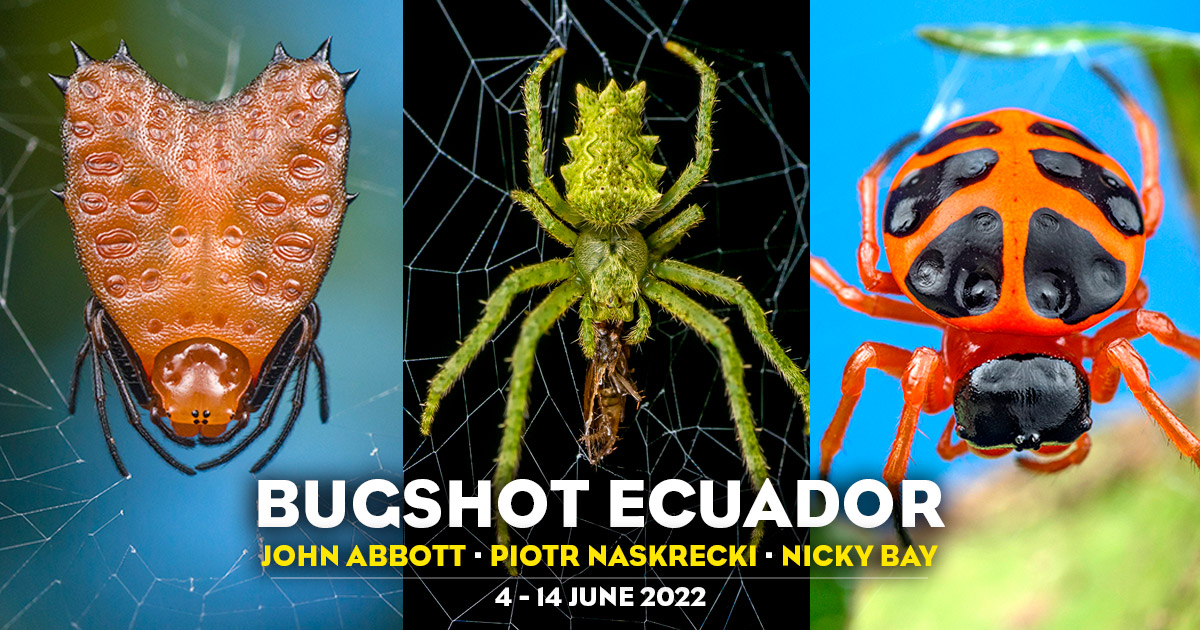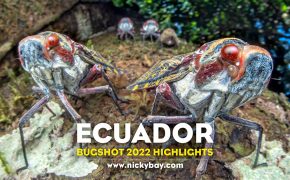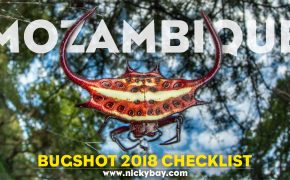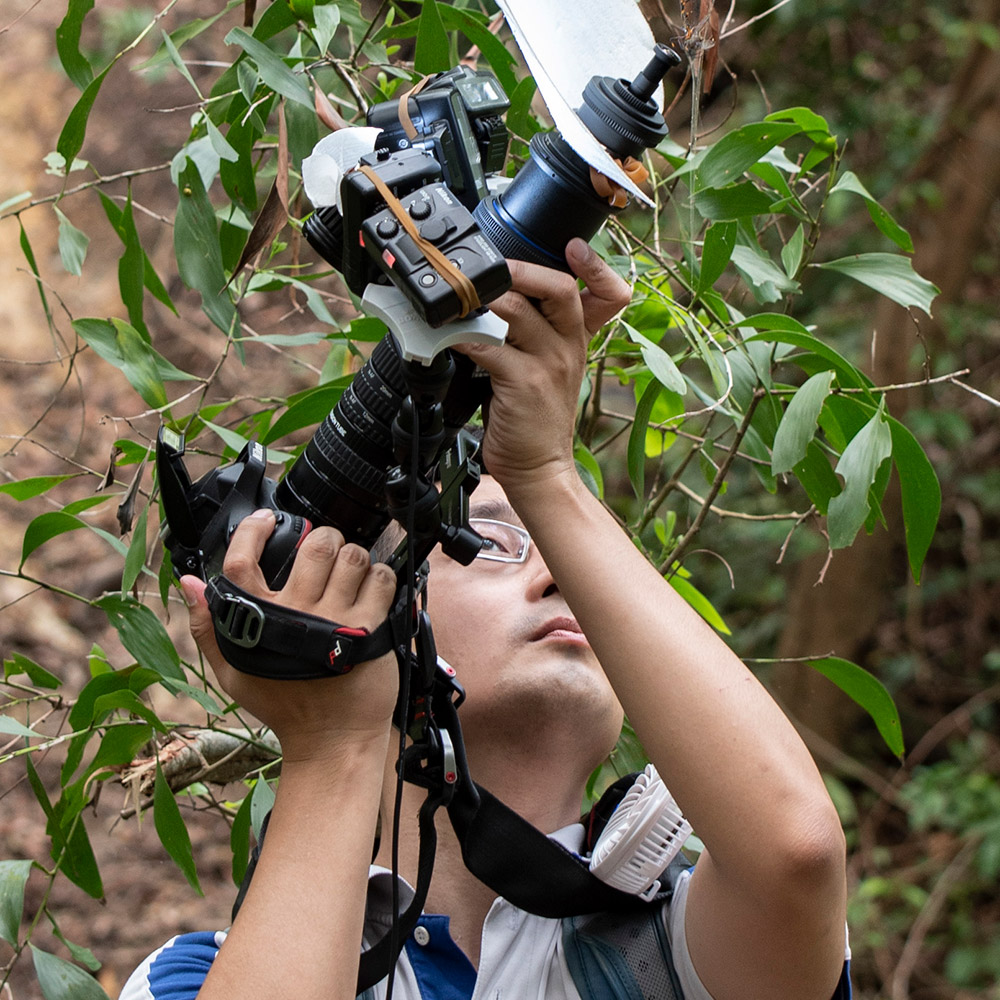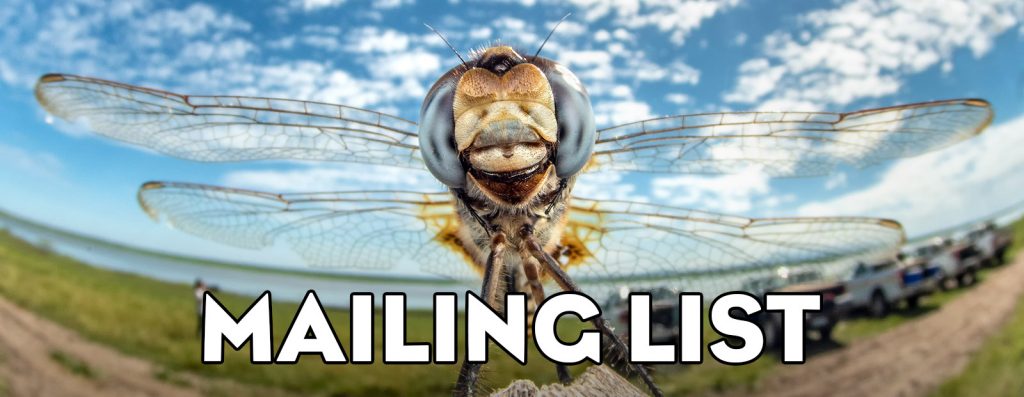BugShot 2022 – Ecuadorian Amazon
If you get breathless or froth in the mouth on seeing a bizarre invertebrate that you’ve only ever heard of or read about and have been dying to photograph, this is for you.
Every year, BugShot organises a 10-day macro workshop in an exotic location and another shorter one in the USA. While COVID had forced the workshops to a halt for 2 years, we have finally resumed the workshops and will be running our much-anticipated trip this year to the Ecuadorian Amazon. The BugShot workshops are usually fully booked over 6 months ahead and this time, it was full within a week from a private announcement. However, a couple of slots have just opened up and we are looking for like-minded, nature-loving, invertebrate-crazy individuals to join us in one of the most remote locations in the world for a macro-centric adventure and workshop.
Join us and learn from some of the world’s most experienced and renowned macro photographers. We will cover a wide array of macro photography topics in detail, and spice it up with natural history presentations as well. Many past BugShot participants have been returning to countless BugShots. We usually joke that either they couldn’t understand anything we taught that they had to attend the lessons again, or they enjoyed it so much that they trust the organisers to make the next trip as awesome as the last one. I hope… it’s the latter. 😉
Here are some of our past workshops and our participants.
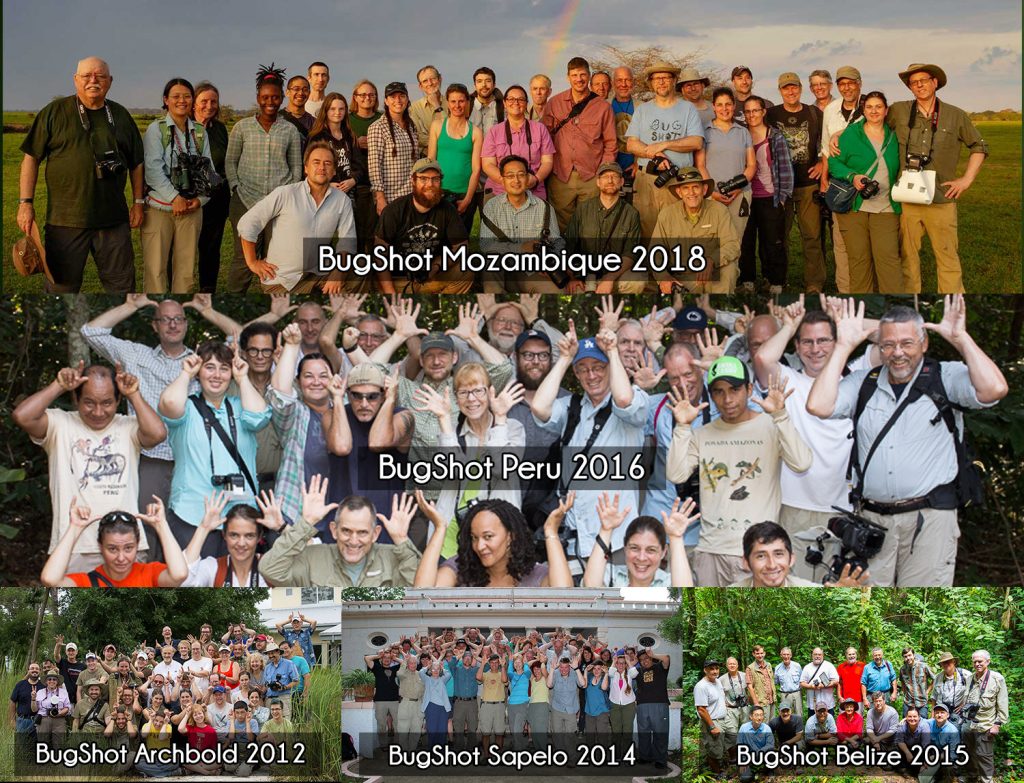
BugShot 2022 Instructors

John Abbott
John is a professional nature photographer, educator and outdoor enthusiast based in Tuscaloosa, AL. John has focused on dragonflies and damselflies throughout much of his career and has written three books on these beautiful subjects that contain much of his photography. John and his wife Kendra are currently working on Peterson Field Guide to Insects of North America and writing a field guide to the Common Insects of Texas He is currently the Director of Research and Collections at the University of Alabama Museums.
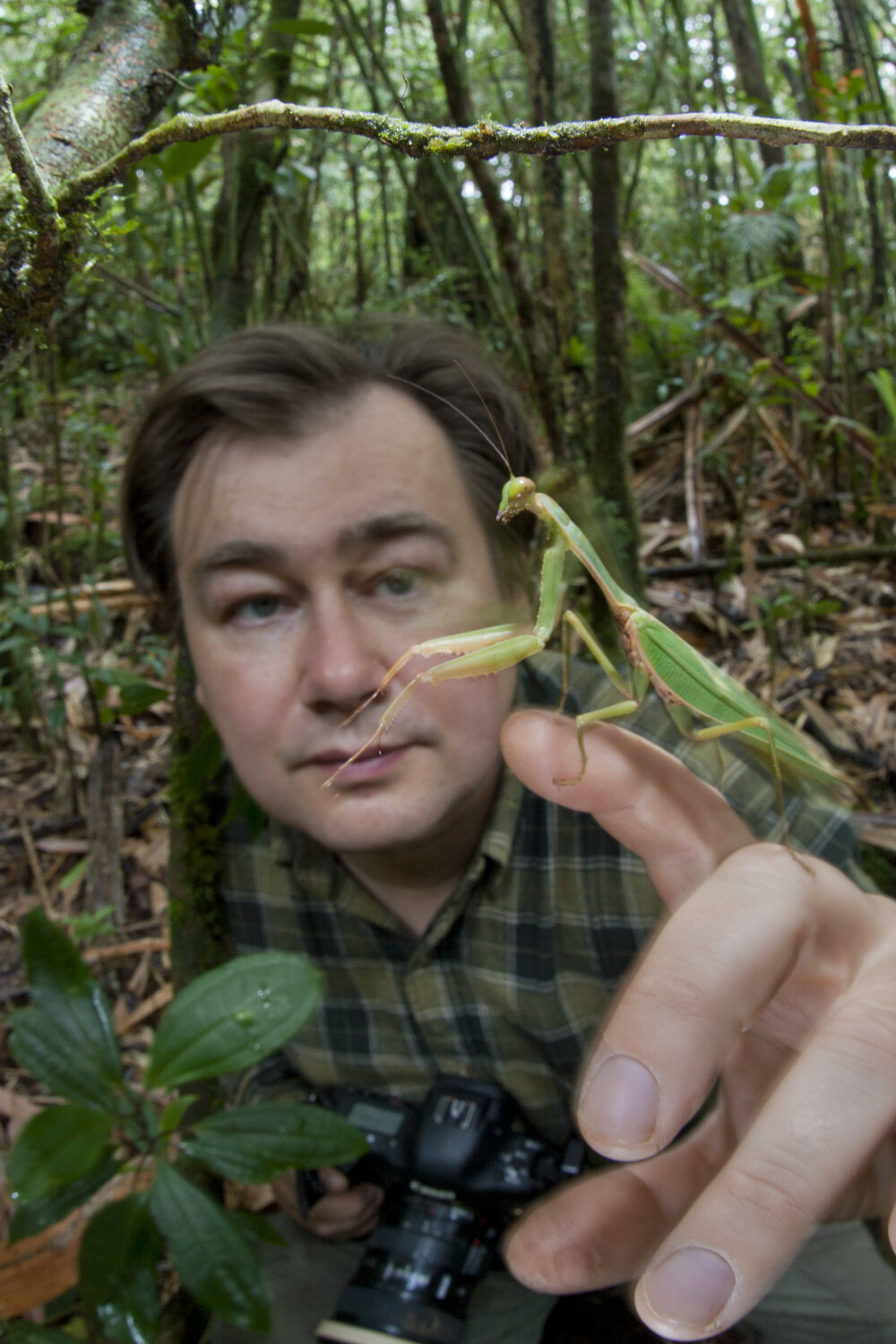
Piotr Naskrecki
Piotr Naskrecki is a Polish-born entomologist, photographer and author, currently at the Museum of Comparative Zoology, Harvard University (Cambridge, MA, USA.).Between 2002 and 2009 Piotr served as Director of the Invertebrate Diversity Initiative at the Center for Applied Biodiversity Science at Conservation International, Washington, D.C. His research focuses on the evolution of katydids and related insects, and the theory and practice of nature conservation.
As a photographer, Piotr strives to promote appreciation and conservation of invertebrate animals – insects, arachnids, and their kin – by capturing both their beauty and roles as vital, often critically important members of the Earth’s ecosystems. He is one of the founding members of the International League of Conservation Photographers (ILCP).
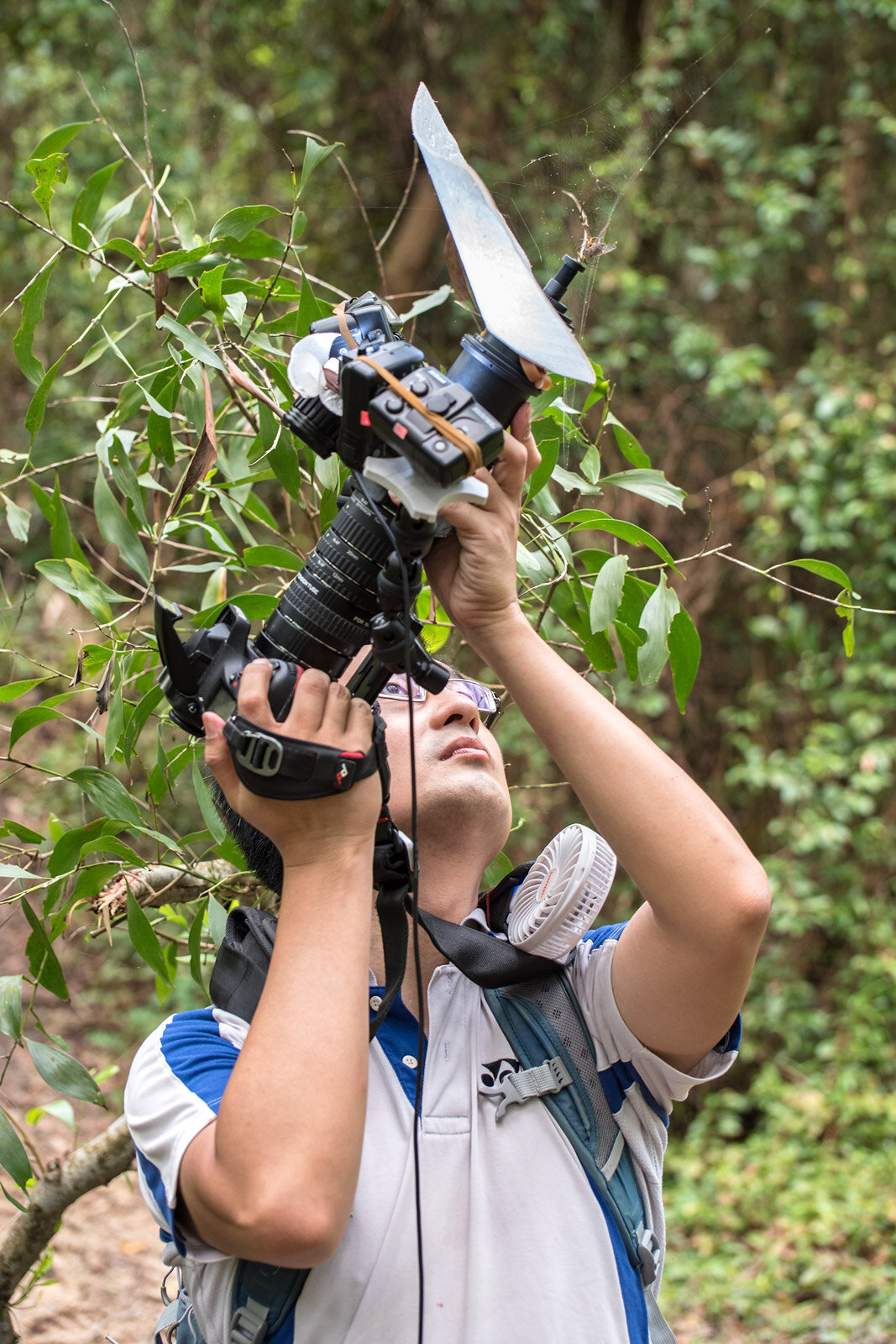
Nicky Bay
Nicky Bay is a world-renowned macro-photographer based in Singapore with works featured on National Geographic, BBC, WIRED, and numerous other publications worldwide. He has had solo photo exhibitions in Europe and parts of Asia. Nicky conducts macro photography workshops in exotic locations around the world, attracting participants from all over the world, many of whom are advanced photographers themselves.
Nicky has put together one of the largest individual arthropod photo databases in the world with almost 40,000 high-quality macro photos on Flickr and is the co-author of Borneo Spiders: A Photographic Field Guide. An engineer by training, Nicky is also the Chief Technology Officer of a tech company and publishes his photographs with macro photography and natural history articles at www.nickybay.com.
Location
Waita Lodge is the only community-based travel initiative in Cuyabeno Reserve. It is located 3 hours up the river by boat.
44 members of the local community work with and for the Lodge, in maintenance, housekeeping, guiding, providing arts and crafts for sale, etc.
For the local community, working for Waita Lodge is a sustainable alternative to working in the oil fields.
Packing List from SciBugs click here.
Getting There
Participants will fly into the Quito, Ecuador airport (UIO) on the 4th of June. Most flights from the US will arrive after 10PM through 1AM the next day. There will be a person from our hotel at the airport to take you to our hotel. We will stay one day in Quito and photograph in the nearby mountains in Guango Lodge and then Nancy of SciBugs has arranged flights to the Amazon (included in workshop fee). After the local flight, we will take a 3-hour boat ride into the Amazon. It will likely rain so make sure to have a rain poncho or umbrella.
Workshop Details
Workshop is limited to 20 participants.
Workshop is from June 4th – June 14th.
Workshop is based in Waiti Lodge Ecuador. The entire lodge will be dedicated to BugShot participants so a light trap can be set up every night.
Instructors: Piotr Naskrecki, Nicky Bay, and John Abbott. Please note that changes in instructors may be necessary depending on workshop enrollment.
Topics include:
- Macro & microphotography equipment
- Composition
- Lighting & flash
- Working with live insects
- Focus stacking
- High-speed flash
- UV/Gif photography
- Photo management
- Post processing
- Photo sharing and critique
During the field sessions, we will explore a variety of habitats with on-the-spot coaching, critique and more!
Registration
Registration fee 4800 USD (double occupancy).
The fee for the workshop includes:
- Daily one-on-one and group instructions from Nicky, Piotr and John
- Daily lectures on macro photography and invertebrate natural history
- In country flights from Quito to eastern Ecuador
- Breakfast, lunch and dinner on days of the workshop are included (as indicated on itinerary)
- Double occupancy hotel style accommodation
- Transportation to and from the airport
The fee for the workshop does NOT include flights to Ecuador, souvenirs, alcohol, drinks and snacks outside of meals.
COVID vaccinations for this trip are required. All staff at the lodge in the Amazon will also be vaccinated.
Cancellation policy is as follows:
– prior to April 1st, 2022: 100% refund minus $300 cancellation fee
– after April 1st, 2022: 50% refund minus $300 cancellation fee
– no refunds after May 1st, 2022
Seats are very limited, register and grab this opportunity early to avoid disappointment.
Photos from Past Expeditions to the Amazon
The following photos are from my prior expeditions to the Amazon. They were not from the same location, but it gives an idea of the type of photos that we would be taking.
Alien Katydid (Vestria sp.)
Some of the katydids here look like aliens. This was no exception.
Rainbow Grasshopper (Caelifera)
Many of the grasshoppers donned colours that might make a rainbow jealous.
Hoverfly larva (Microdon sp.)
Weird little patch of alien grub, suspected to be a hoverfly larva?
Ichneumon wasps (Banchinae)
These stunning group of wasps were some of the prettiest that I’ve ever seen.
Glasswing butterfly (Greta sp.)
Glasswing butterflies were aplenty. Unfortunately this photo doesn’t do the see-through wings any justice.
Bird dung caterpillar
The pile of poop that moves!!
Snake mimic chrysalis (Catonephele orites)
Bizarre chrysalis that appears to mimic a snake’s head. Reminds me of some cartoon shark.
Jewel caterpillar (Dalceridae)
The forest nudibranch.
Stick insect (Phasmatodea)
Loads of stick insects hanging around. Some, like this one, bore bright orange mini-spines.
Stink bug nymphs (Pentatomidae)
Freshly hatched stink bug nymphs gathering around their egg shells displayed an enchanting fluorescence under ultraviolet.
Bug
Not sure which family this bug nymph belonged to, but the blue metallic body with red eyes and legs are a potent photographic combination!
Assassin bug (Reduviidae)
For some reason, this assassin bug looked like a toy…
Squash bug (Coreidae)
Colourful looking squash bug with “muscular” hind legs. (and a bit of pee)
Treehopper (Poppea sp.)
One of these membracids visited us at the light trap when we first set it up. I managed to find the host plant where more were spotted. Really amazing combo of lumps and spines!
Fulgorid planthopper (Enchophora nigromaculata – ID by Geert Goemans)
Almost skipped this fulgorid when we were returning to the cabins past midnight. Luckily I had a closer look to see the purplish legs and arched snout!
Humped leafhopper (Proconia sp.)
Found a tree with troops of these impressive looking humped leafhoppers!
Leafhopper nymph (Cicadellidae)
Felt like a kid with a box of crayons did this… There were just too many different cicadellids to show here, view the others in my Flickr albums.
Pleasing fungus beetle (Gibbifer sp. – ID by Ross Piper)
The pleasing fungus beetles sported interesting pastel colours. That ridiculous hump….!
Weevil (Entiminae – ID by Ross Piper)
Golden-yellow weevil with blue legs. Can’t get any brighter!
Click beetle (Semiotus sp. – ID by Ross Piper)
One of the many small click beetles taking off.
Click beetle (Pyrophorus sp.)
This large click beetle has bioluminescent blinking spots on the posterior edge of the thorax, and the eyes fluoresce under ultraviolet too!
Bioluminescent click beetle larva (Pyrearinus sp.)
At Refugio Amazonas, there was an area of mud banks with lots of these glow worms believed to be click beetle larvae.
Dung beetle (Scarabidae)
Little balls of poop get moved around because of these beetles.
Blunthead tree snake (Imantodes cenchoa)
I wasn’t searching for snakes, but saw a couple.
Catesbyi’s snail eater (Dipsas catesbyi)
Only managed to see some of the smaller snakes.
Tree frog (Rhacophorida)
Several tree frogs chilling out as well!
Scorpion (cf. Tityus sp. – ID by Ross Piper)
Some of these scorpions were hanging out on tree trunks at night. Fluoresced brightly under ultraviolet.
Scorpion (cf. Tityus sp. – ID by Ross Piper)
The most handsome one was found on a leaf!
Tailless whip scorpion (Heterophrynus elaphus – ID by Gil Wizen)
Also saw several amblypygids on the mud banks.
Web tower structure
This web tower structure stirred the internet a few years back. The entire structure was only about 5mm wide and difficult to spot. Unfortunately I only managed to photograph two that were already abandoned.
Social spiders (Anelosimus sp.)
Scattered along the trails were these gigantic messy webs with entire communities of spiders within, with a layer of dead leaves at the bottom. The guides called them the social spiders.
Turtle ant mimic crab spider (Bucranium sp.)
Dog-eared spider, couldn’t have a cuter name!
Crab spiders (Thomisidae)
Was trying to shoot the female, when the male approached from behind. Not the correct way yah?
Tortoise orb weaver (Encyosaccus sp.)
One of the best finds of the trip! Possibly mimicking a ladybird? More on this spider in my earlier blog post on Tortoise Orb Weavers.
Turtle back orb weaver (Hypognatha sp.)
A much smaller genus, but found quite a few of them on Collpa Island. The abdomen is round and flat, resembling a turtle shell.
Orb weaver spider (Parawixia sp.)
Many people like to retrieve spiders from their webs to take close ups, but I prefer to shoot them in situ. They simply look more majestic on their web!
Silver cross spider (Argiope argentata)
A number of these cross spiders made their home in front of the cabins, which explains the messy urban-ish background.
Trashline orb weaver (Cyclosa sp.)
Cyclosa was touted as the decoy spider for building stabilimentum that appears to look like a larger spider.
Roly poly orb weaver (Xylethrus scrupeus)
The super cute roly poly orb weaver was spotted twice in this trip.
Thorned heart orb weaver (Micrathena clypeata)
I called this the Heart spider. Such a beauty!
Orb weaver spider (Verrucosa sp.)
Verrucosa had such a bizarre shape and a creepy posterior.
Wandering spider (Ctenus sp.)
A large Ctenus resting on a rock, allowing me to take a close up.
Wandering spider (Phoneutria sp.)
Probably the most number of Brazilian wandering spiders in a single photo. A proud new mother!
Huntsman spider (Sparassidae)
I didn’t get to shoot many sparassids but managed to spot one with a fluorescent orange body. Unfortunately it ran away before I could take more close ups.
Pinktoe tarantula (Avicularia sp.)
This cute pink-toe tarantula made its home in front of our cabins. Such adorable toes!
Tarantula (Theraphosidae)
A weathered tarantula lurking around on a tree trunk at night.
Tarantula (Pamphobeteus sp.)
Also found a group of siblings! How cute!!
Jumping spider (Lyssomanes sp.)
Many Lyssomanes were spotted. The anterior lateral eyes are situated just above the anterior median eyes.
Jumping spider (Salticidae)
Some of the salticids had really angry looking eyebrows…
Long-legged water spider (Syntrechalea sp.)
The trechaleids were commonly seen on tree trunks. Easily spotted with eye shine!
Panoramic view of the Amazonian River
View of the Amazonian River from the terra firma.

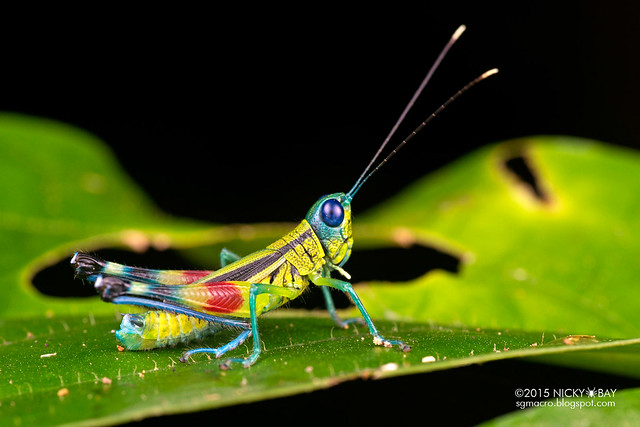
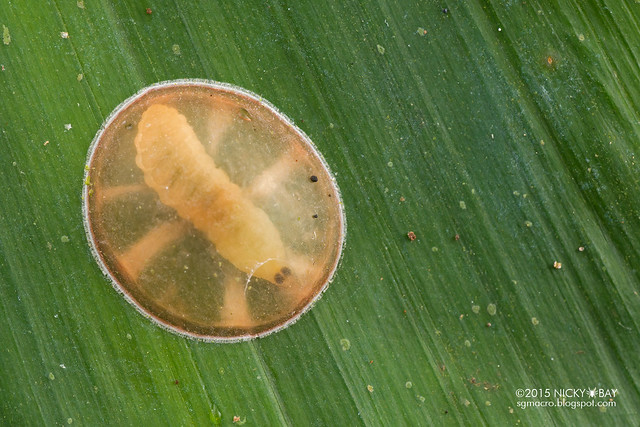
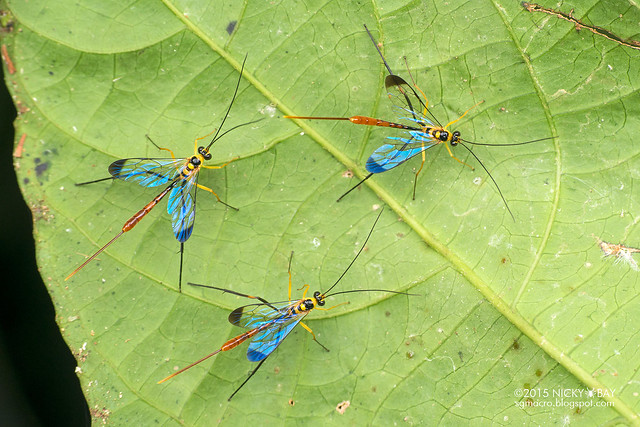


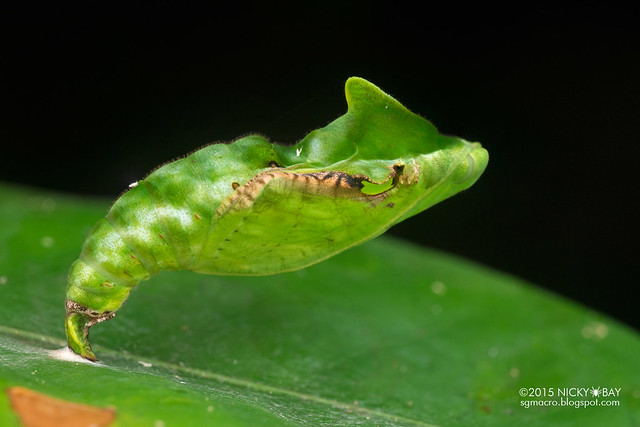
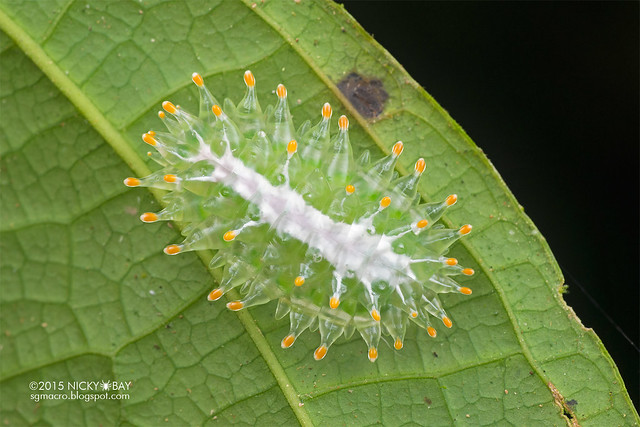
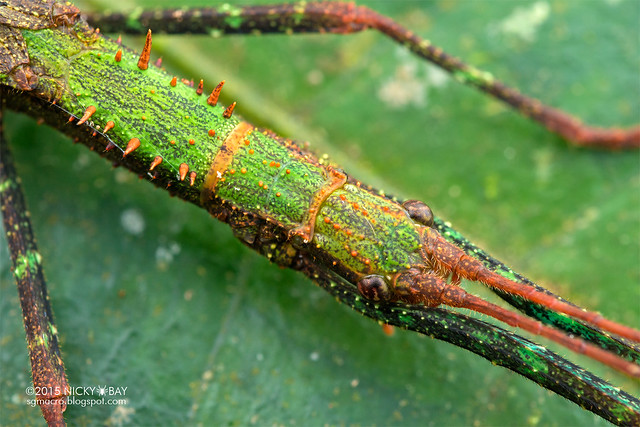


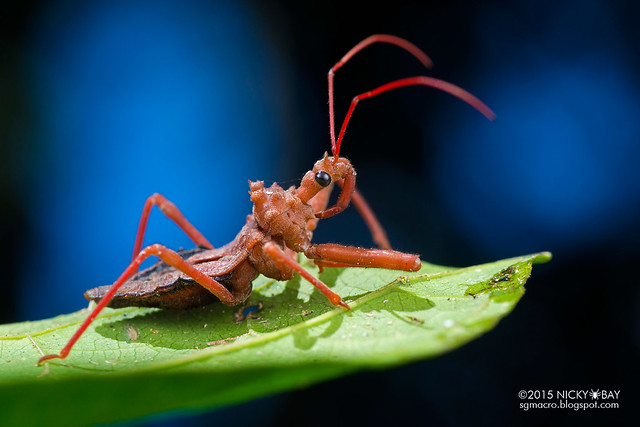
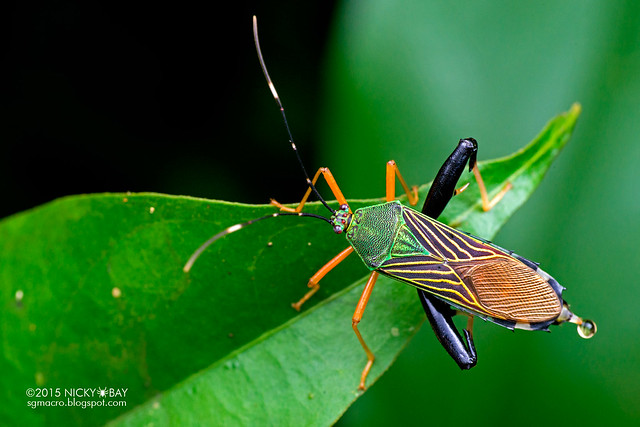
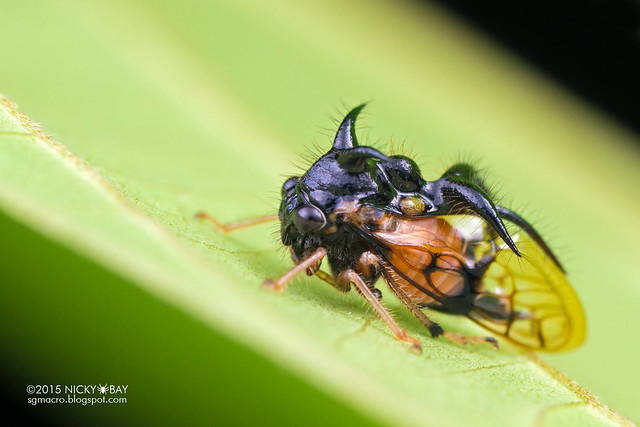
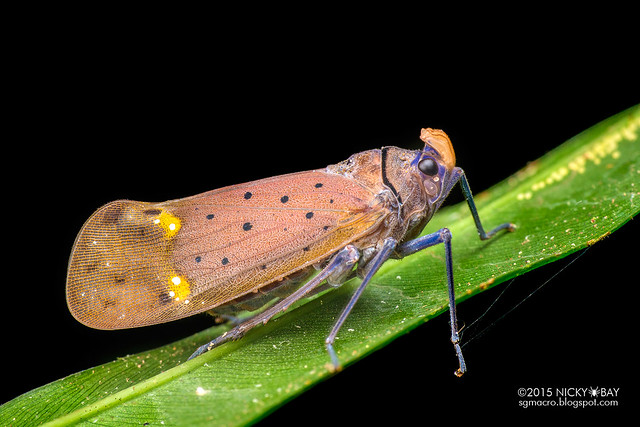




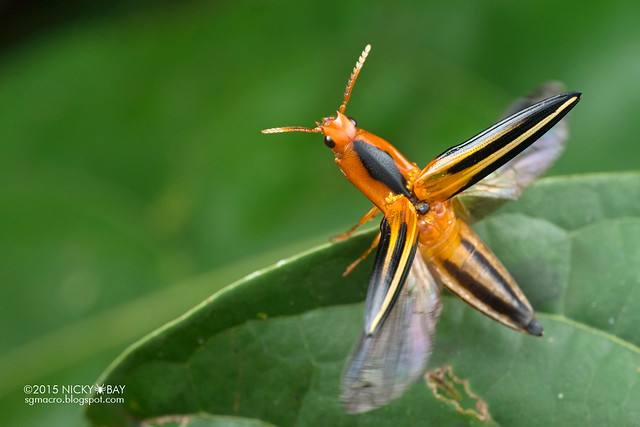
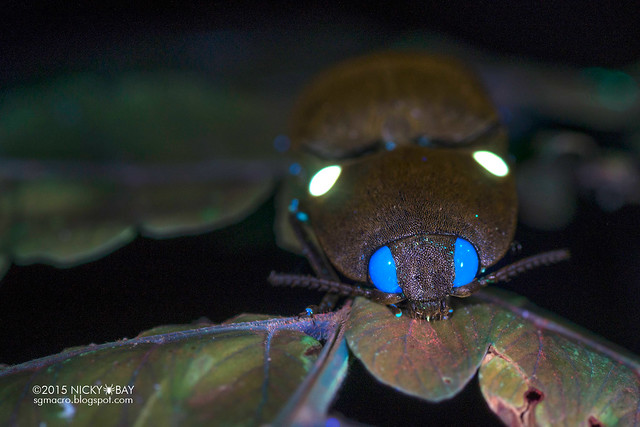

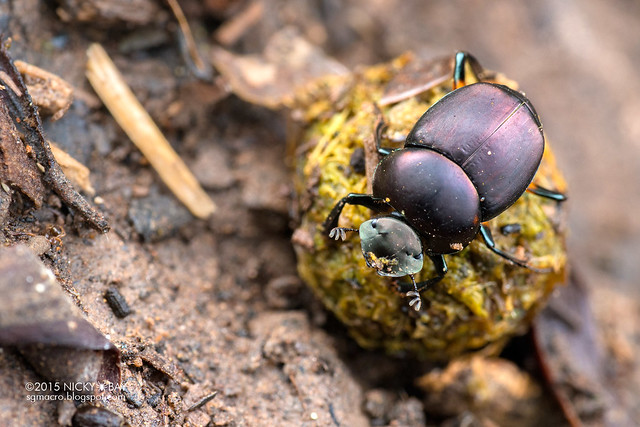

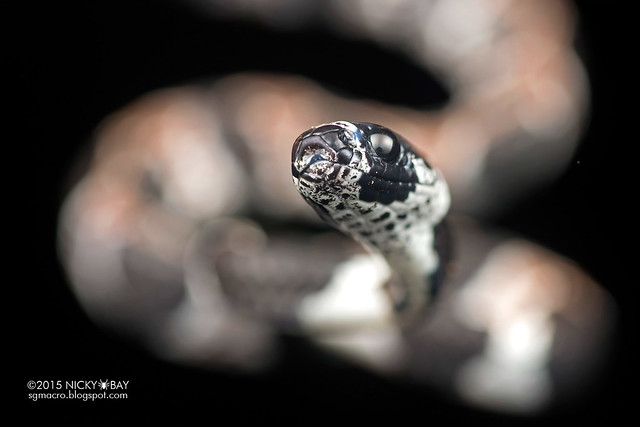
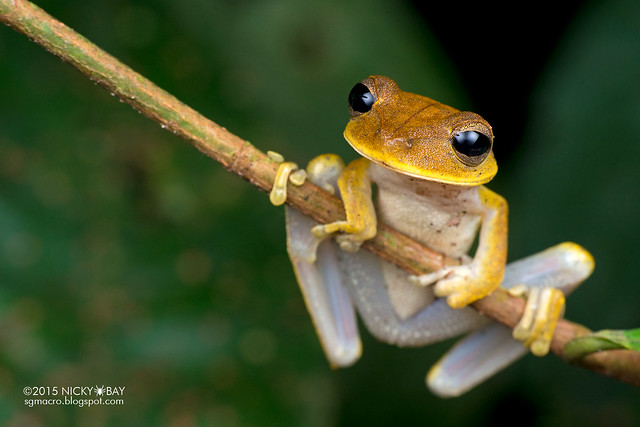

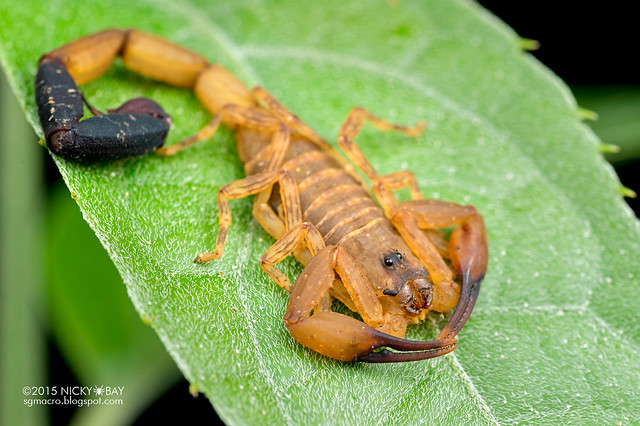
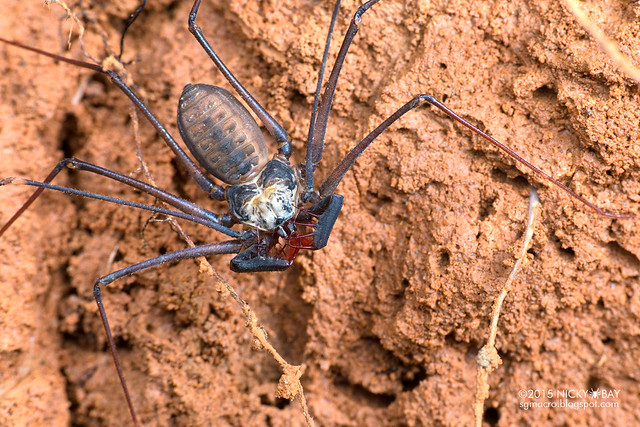
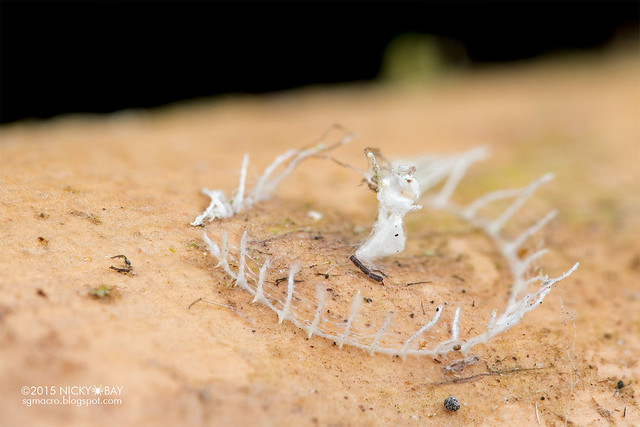
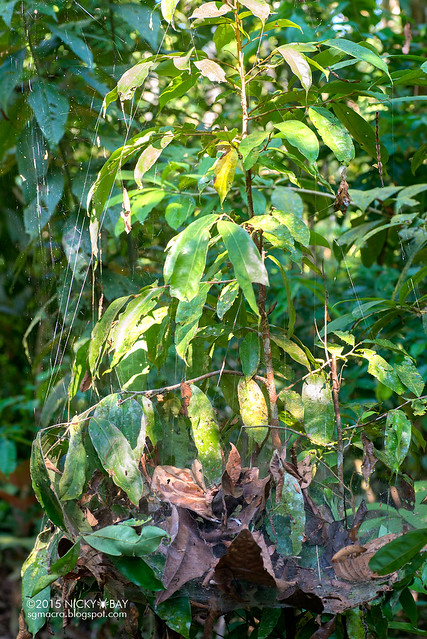
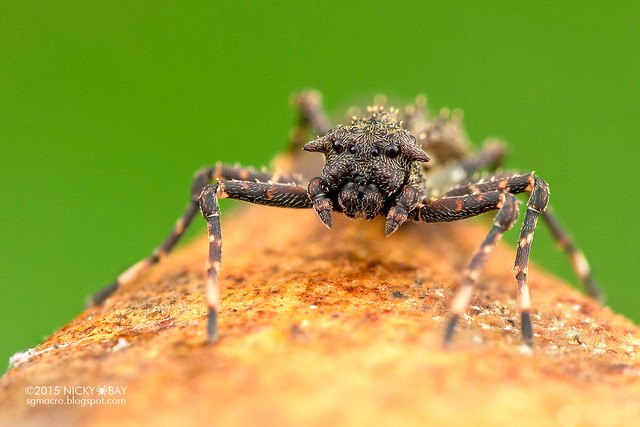
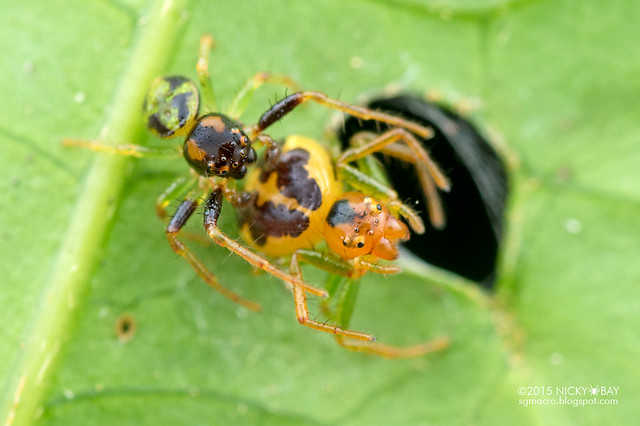

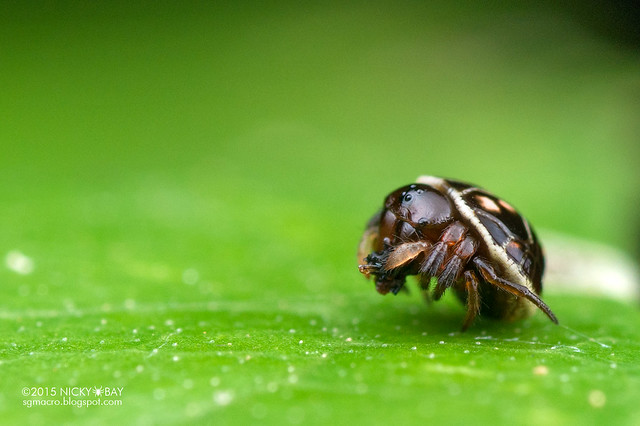
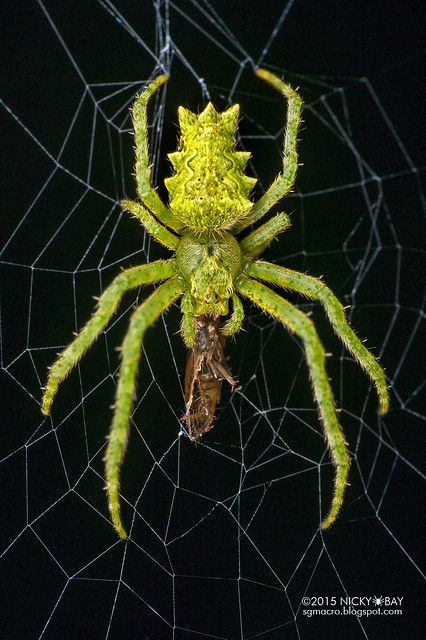
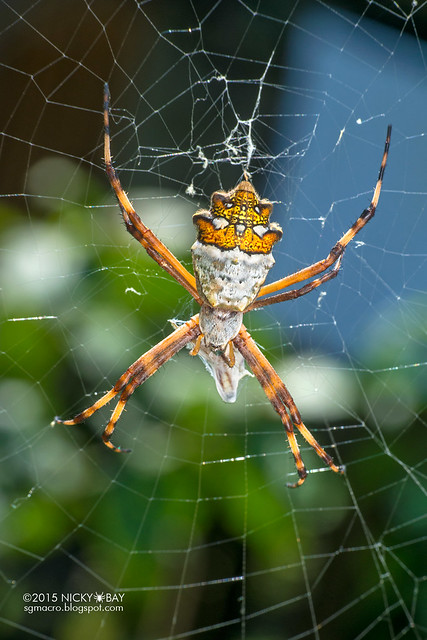
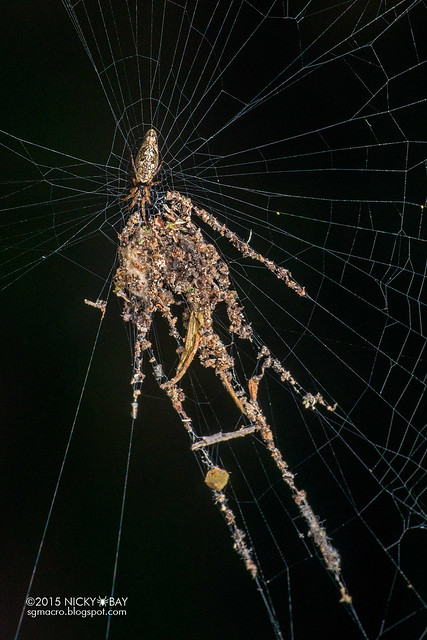
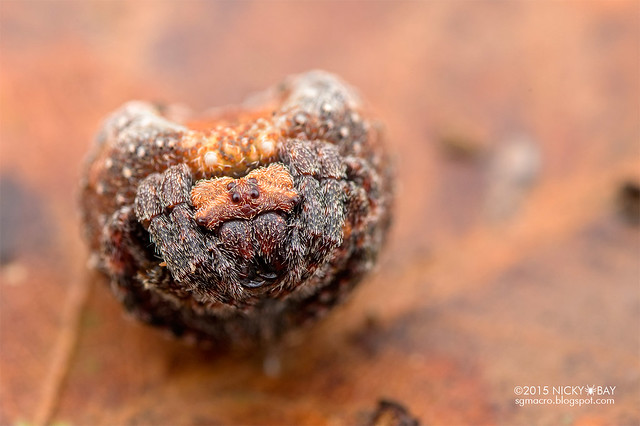
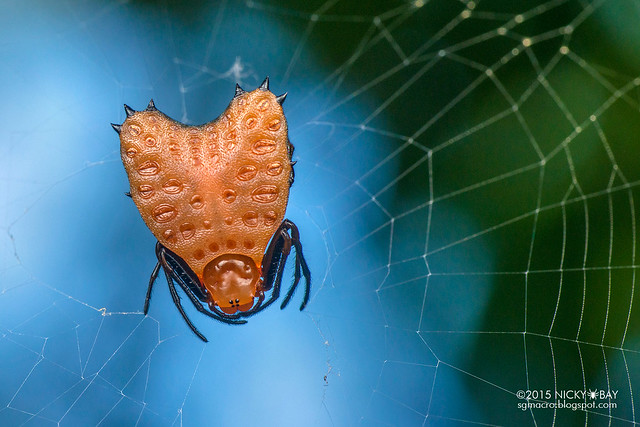
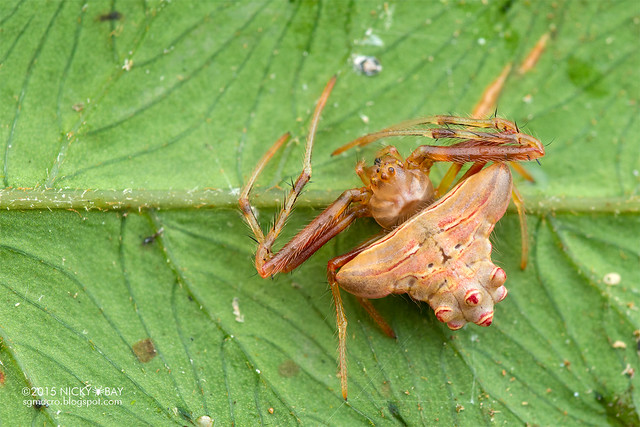
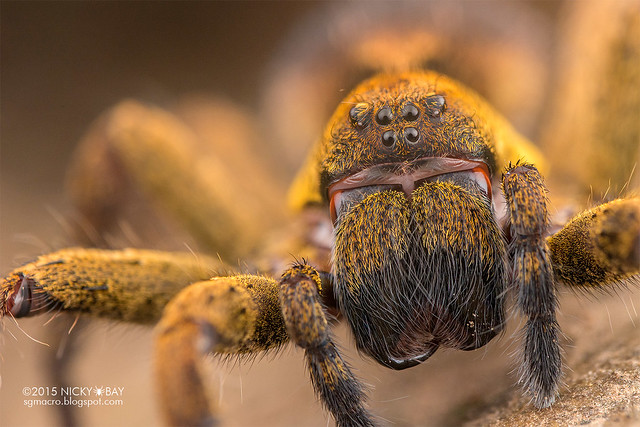


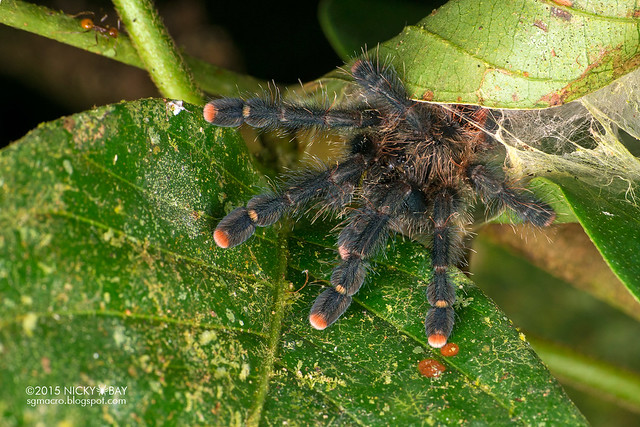
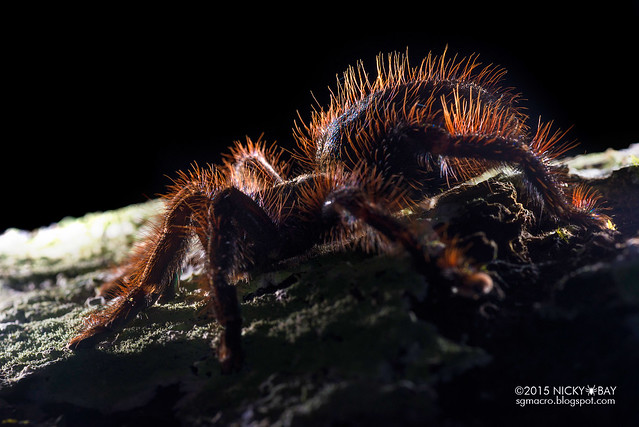

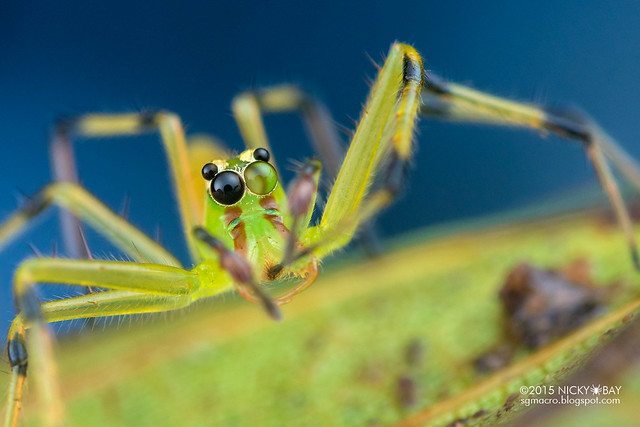
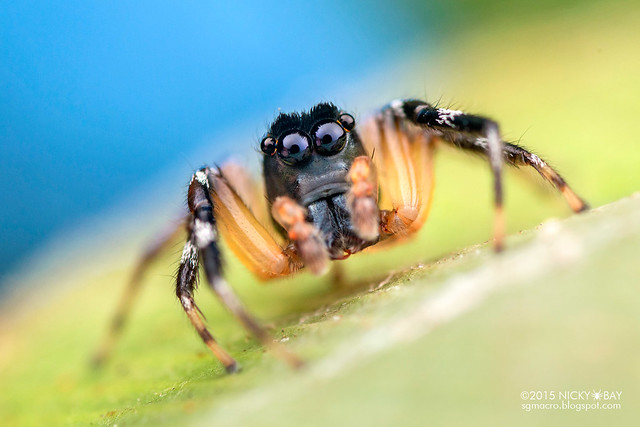
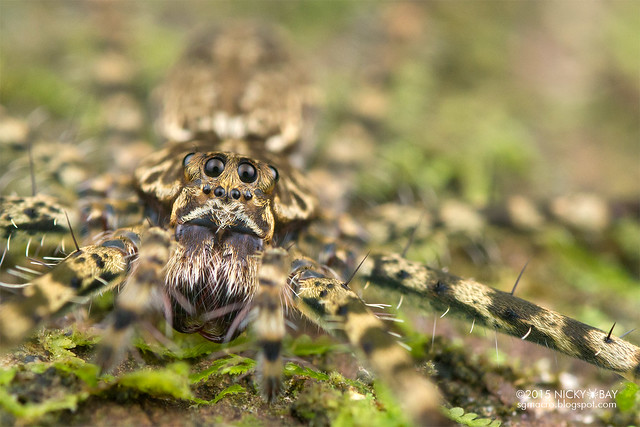

Register for BugShot 2022
We have 4 seats opening up this week, so join us. Almost everyone would be crazier about bugs and macro photography as you are.
